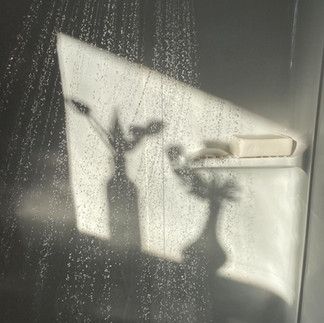Removing water spotting and hard water build up
- rachellefomon
- Jun 13, 2023
- 3 min read
Each year, more people are becoming concerned about the cleanliness of the water in their homes. Because of this, it has become common for homeowners to invest in water filtration, so clean water can be readily accessed. Naturally, the need for education is following suit. But how do we decipher the validity of everything we hear? We’re here to set you on the right path to pure, clean water with the top misconceptions debunked.

MYTH #5:
Whole house filters will remove my water spotting and hard water build up.
FACT:
I hear a lot of customers being told the myth that installing a whole house filter will eliminate water spotting and hard water build up. Unfortunately, most systems sold on the market cannot achieve that and are not being marketed accurately. The only way to create a “spot free rinse” is with reverse osmosis water. Reverse osmosis (RO) systems produce water that is low in Total Dissolved Solids (TDS) and reduces the TDS of water by about 95%. Unfortunately, a whole home Reverse Osmosis system isn’t very practical or cost effective in residential applications.
Let me explain why.
Cost of System:
A whole house Reverse Osmosis system is expensive. A typical system can cost about $10,000-20,000, including the required pre and post treatment equipment, storage tank and more. While the idea of reverse osmosis for the whole home RO system sounds good, it really can be cost prohibitive.
Expensive Maintenance:
Whole house Reverse Osmosis systems require professional installation and on-going maintenance. Each year the system needs new filter replacements, whole-system sanitization, UV lamp changes, and more.
High Water Bills:
Large RO systems use a LOT of water. Roughly two gallons or more are needed to create one gallon of filtered water. You can expect your water bill to double when a whole house reverse osmosis system is installed.
Unnecessary Filtering:
Since the majority of the water used in our homes is not consumed for drinking, but used for flushing toilets and bathing, it’s typically not necessary to have high-quality RO filtered water for your entire home.
More Equipment Needed:
A whole-house RO system can rarely be installed alone. Proper pre and post treatment are often necessary for the delicate RO membranes to function properly. For example, 85% of homes in the U.S. have water that is high in calcium and water should be filtered before entering the RO unit.
Space Requirements:
Whole-house RO systems usually require a 200-500 gallon storage tank to hold treated water. Many times a pre-treatment tank is also needed. Most homes don't have that much extra space in a garage to hold these tanks.
As you can see, it isn’t very feasible to install a whole house RO system.
The next best thing is our Purafier whole house water conditioning and filtration systems.
Although you will still need to wipe down your fixtures and shower doors, with regular cleaning and maintenance, your fixtures will stay looking good and last longer.
CONCLUSION:
There are a lot of myths out there about your water, but the best news is that there are also a lot of answers. Whether you have heard your own myths you need to debunk, or you’re ready to talk to someone about a filtration system, contact PuraClean Water for a free water consultation today to get the facts. We’re here to set you on the right path to pure, clean water with the top misconceptions debunked.










Comments